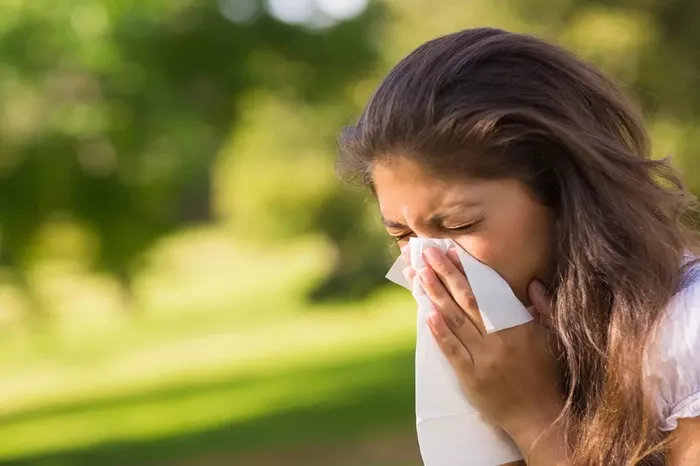Dark spots, also known as hyperpigmentation, are one of the most common skin concerns affecting people of all ages and skin types. They occur when the skin produces excess melanin, the pigment responsible for giving skin its color. This overproduction can be triggered by various factors, including sun exposure, inflammation, hormonal changes, and injuries like acne or cuts. Over time, these spots can make the skin look uneven, aged, or unhealthy, prompting many to seek solutions for a clearer complexion.
The appearance of dark spots can also be influenced by genetic factors, medications, and even some skin care products that irritate the skin. Understanding why dark spots develop is the first step in knowing how to treat them effectively. Each spot carries a story of how the skin has responded to an internal or external influence, and the journey to fading them often requires patience, persistence, and a tailored approach.
What Are the Different Types of Dark Spots?
Not all dark spots are the same. They vary depending on their cause and can behave differently in terms of how long they last and how they respond to treatment. Sunspots, also called solar lentigines, are caused by prolonged exposure to ultraviolet rays. Melasma appears as larger patches, usually triggered by hormonal changes such as pregnancy or birth control use. Post-inflammatory hyperpigmentation results from skin injuries like acne, eczema, or even bug bites.
Each type of dark spot may require different methods to fade effectively. Sunspots, for example, might respond better to laser treatments, while melasma often needs a more cautious, gentle approach to avoid further irritation. Post-inflammatory hyperpigmentation can sometimes fade on its own, but treatment can accelerate the process. Recognizing the type of dark spot is essential because it shapes the strategy for fading and ultimately impacts how long the process will take.
How Does the Natural Healing Process Work?
The skin is a remarkably resilient organ capable of self-repair. When dark spots form, the body works slowly to normalize pigment production and replace damaged cells. Skin naturally renews itself approximately every 28 days, shedding old, pigmented cells and allowing fresh, newer cells to rise to the surface. However, the healing process is gradual and depends on various factors such as age, skin type, lifestyle, and overall health.
For some people, young and healthy skin can fade mild dark spots within a few months without any intervention. For others, especially those with deeper pigmentation issues or more mature skin, it can take much longer. The skin’s natural turnover slows with age, meaning older individuals often experience slower fading. External factors like sun exposure can also interfere with healing, reinforcing the importance of consistent sun protection during the fading process.
How Long Does It Typically Take for Dark Spots to Fade?
The time it takes for dark spots to fade can vary greatly. Mild cases of post-inflammatory hyperpigmentation might start to lighten within a few weeks and nearly disappear in three to six months with proper care. Sunspots and melasma can be more stubborn, sometimes taking a year or more to fade significantly, even with treatment. In some cases, dark spots may never fully disappear without medical interventions.
Skin tone also plays a significant role. Individuals with lighter skin tones might see faster improvement because the contrast between dark spots and the surrounding skin is more noticeable and more easily addressed. In darker skin tones, hyperpigmentation can be more persistent and may require longer, gentler treatments to avoid irritation that can make pigmentation worse. Consistency in skin care routines, use of treatments, and sun protection all influence how quickly spots can fade.
What Factors Influence the Speed of Fading?
Several factors affect how quickly dark spots can fade. First, the underlying cause of the pigmentation matters. If the source of irritation or damage is ongoing, such as continuous sun exposure or repeated acne breakouts, new spots can appear even as old ones heal, prolonging the overall process. Second, the depth of the pigmentation determines how stubborn the spots will be. Surface-level pigmentation fades faster than deeper dermal pigmentation.
Skin care habits play a huge role. Regular use of sunscreen prevents further darkening and allows treatments to work more effectively. Incorporating brightening ingredients like vitamin C, niacinamide, licorice extract, and retinoids into a daily routine can speed up fading by encouraging cell turnover and reducing melanin production. On the other hand, neglecting a consistent routine or using harsh products that inflame the skin can delay healing and even worsen pigmentation.
Which Treatments Help Dark Spots Fade Faster?
Various treatments can accelerate the fading of dark spots. Over-the-counter products containing active ingredients like hydroquinone, retinoids, alpha hydroxy acids (AHAs), and kojic acid can be very effective. Hydroquinone, often considered the gold standard for lightening dark spots, works by inhibiting melanin production. Retinoids speed up cell turnover, helping to bring fresher skin to the surface.
Professional treatments also offer more powerful solutions. Chemical peels remove layers of pigmented skin, while laser therapies target melanin directly to break it down. Microneedling can stimulate collagen production and help improve overall skin texture and tone. However, these treatments carry risks and should be performed by licensed professionals. Consulting a dermatologist can ensure that the chosen treatment is appropriate for your skin type and the severity of pigmentation.
How Important Is Sun Protection in Fading Dark Spots?
Sun protection is perhaps the single most critical element in fading dark spots. Ultraviolet radiation stimulates melanin production, which can darken existing spots and trigger new ones. Even minimal daily exposure, like walking to your car or sitting by a window, can hinder progress. Therefore, applying broad-spectrum sunscreen with at least SPF 30 every day, rain or shine, is essential.
Reapplication every two hours when outdoors ensures continued protection. Wearing hats, sunglasses, and seeking shade also helps shield the skin from harmful rays. Without diligent sun protection, even the most effective treatments will have limited success, and new pigmentation problems may arise. Making sun protection a non-negotiable part of daily life is crucial for anyone serious about fading dark spots.
Can Lifestyle Changes Impact Dark Spot Fading?
Healthy lifestyle habits can support the fading process. Staying hydrated helps maintain skin elasticity and function. Eating a diet rich in antioxidants, such as fruits and vegetables, can protect skin from oxidative stress that exacerbates pigmentation. Avoiding smoking and minimizing alcohol intake also contributes to healthier skin and more efficient healing.
Stress management matters as well. Chronic stress can lead to hormonal imbalances that worsen pigmentation issues like melasma. Practicing relaxation techniques, getting adequate sleep, and engaging in regular physical activity help maintain a hormonal balance and promote better skin health overall. Lifestyle changes may not produce overnight results, but over time they create a foundation for healthier, more resilient skin.
What Happens If Dark Spots Do Not Fade?
Sometimes, despite consistent efforts, dark spots remain stubborn. In such cases, it is important not to lose hope. Consulting a dermatologist can uncover deeper issues such as dermal pigmentation, which lies beneath the surface and is harder to treat. Advanced treatments like intense pulsed light (IPL) therapy, fractional lasers, or prescription-strength topical agents might be necessary.
A dermatologist can also rule out other conditions that mimic dark spots, such as skin cancers or chronic skin diseases, ensuring proper diagnosis and treatment. Patience remains key. Some pigmentation can take years to improve significantly, and certain types of pigmentation might only fade partially. However, with a tailored plan and professional guidance, improvements are always possible.
How Can You Prevent New Dark Spots From Forming?
Preventing new dark spots is just as important as treating existing ones. This means maintaining strict sun protection, even when indoors or during winter months. Being gentle with the skin also helps; picking at acne, scratching insect bites, or using irritating products can all trigger new pigmentation issues.
Incorporating preventive ingredients into skincare, such as antioxidants and melanin inhibitors, can further guard against new spots. Regular exfoliation with mild acids promotes healthy cell turnover, preventing the buildup of pigmented cells. Building a skincare routine focused on protection, nourishment, and gentle maintenance ensures that skin stays as even-toned and healthy as possible over time.
Conclusion
The journey to fading dark spots requires patience, persistence, and a thoughtful approach. On average, dark spots can begin to fade within a few months, but some may linger for a year or more depending on their cause, depth, and individual skin factors. Understanding the types of pigmentation, using appropriate treatments, protecting the skin from the sun, and making healthy lifestyle choices all contribute to faster and more lasting results. While the process can sometimes feel slow and frustrating, every step taken toward healthier skin is a victory. With time, care, and the right strategy, clearer and more radiant skin is within reach.
Related Topics































